HPV16 and cancer prevention
Professor Amber D’Souza, based at Johns Hopkins Bloomberg School of Public Health in the US, is working to develop improved means of detecting oral HPV16 infection. The findings could help detect oropharyngeal cancers caused by HPV earlier and reduce cancer incidence
TALK LIKE AN HPV RESEARCHER
HUMAN PAPILLOMAVIRUS (HPV) – the most common viral infection of the reproductive tract
OROPHARYNX – the middle part of the pharynx (throat and back of the mouth)
OROPHARYNGEAL CANCER – a type of head and neck cancer
SEXUALLY TRANSMITTED INFECTION – infections that usually pass from one person to another through sexual contact
HPV-OPC – a cancer of the throat caused by the human papillomavirus
HPV16 – human papillomavirus type 16
CANCER PREVENTION – action taken to lower the risk of getting cancer
The human papillomavirus (HPV) is the most common sexually transmitted infection in the world, with approximately 43 million HPV infections in 2018. In most instances, HPV is combatted by the body’s immune system and does not cause any health issues or problems. However, sometimes the infection persists and leads to problems such as genital warts and cancer. In addition to causing oropharyngeal cancer, HPV can cause cervical, anal, penile and vaginal cancer. There are many different HPV strains that can cause cancer, but one type, HPV16, causes most HPV-related cancers.
Around 1% of men and 0.5% of women in the general US population have an oral HPV16 infection, with 10-20% of men and 4-10% of women having an oral HPV16 infection at some time in their life. Most people clear these infections on their own – through their immune systems – but, in some people, these infections persist and, after many years, progress to cause oropharyngeal cancer (or another form of cancer).
Indeed, HPV causes most oropharyngeal cancers in the US – this form of the cancer is called HPV-OPC. However, there are still no effective screening methods to detect these cancers. It is with this in mind that Professor Amber D’Souza, based at Johns Hopkins Bloomberg School of Public Health, and her colleagues, established a project that seeks to improve the prevention and screening of these cancers, with a view to improving patient outcomes.
IF SOMEONE HAS HAD THE HPV VACCINE, TO WHAT EXTENT ARE THEY PROTECTED FROM HPV-OPC?
HUMAN PAPILLOMAVIRUS (HPV) – the most common viral infection of the reproductive tract
OROPHARYNX – the middle part of the pharynx (throat and back of the mouth)
OROPHARYNGEAL CANCER – a type of head and neck cancer
SEXUALLY TRANSMITTED INFECTION – infections that usually pass from one person to another through sexual contact
HPV-OPC – a cancer of the throat caused by the human papillomavirus
HPV16 – human papillomavirus type 16
CANCER PREVENTION – action taken to lower the risk of getting cancer
The human papillomavirus (HPV) is the most common sexually transmitted infection in the world, with approximately 43 million HPV infections in 2018. In most instances, HPV is combatted by the body’s immune system and does not cause any health issues or problems. However, sometimes the infection persists and leads to problems such as genital warts and cancer. In addition to causing oropharyngeal cancer, HPV can cause cervical, anal, penile and vaginal cancer. There are many different HPV strains that can cause cancer, but one type, HPV16, causes most HPV-related cancers.
Around 1% of men and 0.5% of women in the general US population have an oral HPV16 infection, with 10-20% of men and 4-10% of women having an oral HPV16 infection at some time in their life. Most people clear these infections on their own – through their immune systems – but, in some people, these infections persist and, after many years, progress to cause oropharyngeal cancer (or another form of cancer).
Indeed, HPV causes most oropharyngeal cancers in the US – this form of the cancer is called HPV-OPC. However, there are still no effective screening methods to detect these cancers. It is with this in mind that Professor Amber D’Souza, based at Johns Hopkins Bloomberg School of Public Health, and her colleagues, established a project that seeks to improve the prevention and screening of these cancers, with a view to improving patient outcomes.
IF SOMEONE HAS HAD THE HPV VACCINE, TO WHAT EXTENT ARE THEY PROTECTED FROM HPV-OPC?
The HPV vaccine is very good at preventing new HPV infections, so among vaccinated individuals the risk of oral HPV infection is very low. “The HPV vaccine programme began in 2006 and targets young people because the HPV vaccine doesn’t help clear an HPV infection a person already has when they are vaccinated and so doesn’t work as well among older individuals,” explains Amber. “By 2045, the rate of oropharyngeal cancer among young people (<45 years old) will have halved because of HPV vaccination that is happening now. Because most oropharyngeal cancer occurs in older people – people who have not been vaccinated –, it will take several decades before the overall rate of oropharyngeal cancer decreases.”
WHAT TREATMENT IS CURRENTLY AVAILABLE FOR HPV-OPC PATIENTS?
There are several means of treating HPV-OPC patients, including surgery, radiation chemotherapy or a combination of the two. Many patients recover completely after treatment, without any serious side effects. However, for others the oropharynx can be affected long-term, making swallowing, tasting and talking difficult. However, screening for these types of cancers is difficult and the sooner the cancer is discovered, the better.
WHY IS SCREENING FOR THESE CANCERS SO CHALLENGING?
The oropharynx is a part of the throat that is difficult to see, and it also has deep tonsillar crypts (tissue pockets) where malignant cells develop first. In addition, there are usually no physical symptoms – at least initially – so these cancers are difficult to detect at the early stages. “We know oral HPV infection persists for many years – usually more than 10 – before it leads to cancer,” says Amber. “Additionally, clinicians have never seen a pre-cancerous oropharyngeal lesion, so it is hard to screen for these cancers; by the time the infections have led to cancerous cells that cause visible lesions, it is already cancer.”
WHY ARE SOME PEOPLE MORE AT RISK OF HPV-OPC THAN OTHERS?
HPV infections are transmitted sexually; genital HPV infections are spread during sex and can spread to the mouth and cause oral HPV infection when performing oral sex. “An individual’s sexual behaviour, such as the number of partners they have, is an important risk factor, but it does not completely explain risk. Because this is a common infection, many people have a low number of partners but, by chance, get exposed and become infected,” says Amber. “Men are more likely to get infected and less likely to clear these infections. This is, in part, because of behaviour (men have more partners, on average) but also because men’s immune systems appear to be less able to control HPV infection.”
HOW IS AMBER CONDUCTING HER STUDY?
Amber and her team are studying people at increased risk of oral HPV infection, based on known risk factors. From there, they study how often oral HPV infections persist and the best ways to screen for persistent infection. “We collect risk factor information and biological samples (like an oral rinse, saliva, blood and urine samples) and we follow those who have infection with research and clinical tests,” explains Amber. “This allows us to explore whether any of the research biomarkers and clinical tests we are considering can predict who will have persistent infection and can help us detect oropharyngeal abnormalities.”
HOW DOES AMBER DESIGN THE RIGHT STUDY TO ANSWER HER RESEARCH QUESTION?
A big part of epidemiology is study design. Amber explains, “Sometimes, we want to compare people with and without disease (called a case-control study) and, other times, we want to follow a group of people – some with the risk factors of interest and some without – to see who develops the disease (called a cohort study).” There are lots of other study designs. After picking the right design, Amber sets the criteria for who is included or excluded from the study enrolment to ensure there is no bias in the enrolment and the people in the study are representative. Amber and her team also focus on making sure they are measuring their exposure (risk factor) and outcome (disease) accurately, and collecting the information on these factors without bias.
WHAT ARE THE CHALLENGES OF RESEARCH THAT FOCUSES ON PERSONAL BEHAVIOUR?
An individual’s private behaviour is often a sensitive subject and can be challenging for participants to discuss with Amber and her team. On the other hand, it can be a positive experience when people get answers to questions they might have about their behaviours. “There is no way to cure an existing HPV infection once you already have it, so it can be difficult when our research testing identifies people who have an HPV infection,” says Amber. “Identifying an infection, without being able to offer a treatment, can cause people to worry, so we have to balance the benefits or harms of each research study.”
WHAT HAVE BEEN THE KEY FINDINGS SO FAR?
When Amber first began studying HPV, it was not known that it could cause oropharyngeal cancer – she was actually part of the team that was able to show the causality. In addition, her team has learned how oral HPV infections are transmitted (sexually) and that it takes more than 10 years for these infections to lead to cancer. Finally, the team has shown that these infections do not spread through everyday behaviours, so patients do not need to worry about actions such as sharing cutlery or kissing family members. This information helps those who have oropharyngeal cancer understand how they became infected and helps those worried about whether they will develop oropharyngeal cancer understand risk levels and what affects that risk.
WHAT ARE THE NEXT STEPS FOR THE PROJECT?
It is still not known why most people are able to clear these infections while others cannot. If Amber and the team can determine the factors that influence persistence of HPV infection, they can identify who is most at risk of oropharyngeal cancer and how to best prevent these cancers.
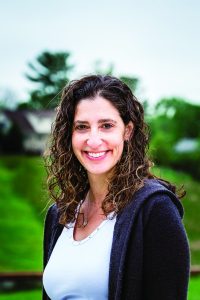 PROFESSOR AMBER D’SOUZA
PROFESSOR AMBER D’SOUZA
Department of Epidemiology, Johns Hopkins Bloomberg School of Public Health, Johns Hopkins University, Maryland, US
FIELD OF RESEARCH
Epidemiology
RESEARCH PROJECT
Investigating why some people are at increased risk of oral HPV infection (based on known risk factors) to inform the best ways to screen for oropharyngeal cancer
FUNDER
National Institutes of Health (NIH)
 PROFESSOR AMBER D’SOUZA
PROFESSOR AMBER D’SOUZA
Department of Epidemiology, Johns Hopkins Bloomberg School of Public Health, Johns Hopkins University, Maryland, US
FIELD OF RESEARCH
Epidemiology
RESEARCH PROJECT
Investigating why some people are at increased risk of oral HPV infection (based on known risk factors) to inform the best ways to screen for oropharyngeal cancer
FUNDER
National Institutes of Health (NIH)
ABOUT EPIDEMIOLOGY
Epidemiology is the study of disease or injury patterns in human populations. Initially, Amber wanted to study environmental science or wildlife biology, but came to realise that helping humans was her main interest. Amber knew she wanted to be an epidemiologist when she saw the impact it can have on public health. Epidemiologists are an important part of preventive health care systems – Amber has shown in her research how important epidemiology is in preventing and treating infections.
Amber’s work has also seen her researching other infections like HIV and coronavirus, so there is a need for her to switch between research areas and compartmentalise the different projects. “I like to work on questions where there are still lots of unknowns to answer – finding those answers is an exciting feeling. I do work across different topic areas, following interesting or pressing scientific questions in whatever area they arise,” explains Amber. “My training was in infectious disease, and because I studied HPV (which can cause cancer), it led me to also become an expert in cancer, and I now feel at home in both research areas.”
HOW HAS AMBER DEVELOPED THE COMMUNICATION SKILLS NECESSARY TO DISSEMINATE HER RESEARCH?
Amber’s work, particularly regarding COVID-19, necessitates doing interviews with the press, which has been a big learning curve for her. As the pandemic worsened, Amber conducted interviews with the press multiple times per week in 2020 and 2021, which naturally made her better – practice makes perfect! “The parts of my work I most enjoy are exploring the data to find answers in our research studies to questions we had, and then being able to communicate that information to the people who have questions about that disease or infection,” she says. “I enjoy the press interviews because I know it helps communicate what we know to the public, which is important to me.”
WHAT MOTIVATES AMBER TO DO THE WORK SHE DOES?
Amber went into public health to try and make a difference to people’s lives. “I really believe in the power of prevention and using our health tools to decrease suffering and save lives, such as risk-reduction through changing our behaviour to reduce infections like HPV, HIV, or coronavirus from spreading, and promoting vaccination,” she explains. “I am motivated to help people who have a disease, whether that is by improving screening to detect it early or helping to understand the course of the disease.”
WHAT ISSUES WILL THE NEXT GENERATION OF EPIDEMIOLOGISTS FACE?
Epidemiology is a science that is largely about how to correctly design, conduct and analyse research studies. As many of the more direct exposure-disease links have been worked out, the questions being asked are about increasing complex relationships where many factors interact. If you want to help humans and advance our understanding of diseases, then epidemiology might be the perfect career!
EXPLORE A CAREER IN EPIDEMIOLOGY
• The American Public Health Association has general information about public health, which is a good place to start. Some health departments have part-time jobs or volunteer opportunities that can be a great introduction to public health and epidemiology.
• ExploreHealthCareers.org provides a lot of useful information, particularly for those based in the US who are interested in epidemiology.
• According to Salary.com, salaries for epidemiologists in the US (depending on experience and role) range between $73,000 and $138,000 (and more when you have a PhD).
PATHWAY FROM SCHOOL TO EPIDEMIOLOGY
Some colleges and universities have public health programmes, so Amber suggests researching particular institutions. As for subjects, she says, “Classes in science, especially biology and mathematics (in topics such as statistics), are useful. Programming skills also help as we do a lot of data management and analysis in epidemiology.”
With an undergraduate bachelor’s degree in public health, you can work in several entry-level epidemiology programme assistant positions, for example in a health department. For most epidemiology positions, you will need a postgraduate degree, either a master’s or a PhD, in epidemiology or a related subject, such as public health, statistical science or biological science, to work as an epidemiologist.
AMBER’S TOP TIP
Find something you enjoy doing! It took me a while to find epidemiology; I worked in lab science and as a teacher before working for the health department where I found out how much I enjoyed public health. For my master’s, I took classes in different fields of public health. I had never heard of epidemiology, but when I took those courses, I knew I had found something I really loved and was good at!
HOW DID AMBER BECOME AN EPIDEMIOLOGIST?
WHAT WERE YOUR INTERESTS WHEN YOU WERE GROWING UP?
I have always been interested in health and taking care of people. When I was in high school, I volunteered in a hospital and in nursing homes.
WHO OR WHAT INSPIRED YOU TO BECOME A SCIENTIST?
I was always interested in science. Early on, I thought I might be involved in environmental science or wildlife biology. I majored in biology in college and thought I might study primate behaviour like Jane Goodall, but after living in a rain forest during my semester abroad in college, I realised I would miss people when doing extended field work and was drawn to human health even more than animal and plant health.
WHAT ATTRIBUTES HAVE MADE YOU SUCCESSFUL AS A SCIENTIST?
I am very organised and good at making and implementing plans, which has really helped all the self-imposed steps needed to be successful in academia. The scientific process has a lot of ups and downs – experiments that don’t work, hypotheses that are wrong, projects or papers you work on that are rejected or need major changes –, so resilience to try again and confidence in yourself (combined with lots of hard work and being able to hear, incorporate and grow from feedback) are also important.
HOW DO YOU OVERCOME OBSTACLES/SWITCH OFF FROM YOUR WORK?
I love what I do but it is also very important to me to have life balance – time with my family, and some time for self-care (be that to exercise, read a book or unwind). Sometimes, it is hard to maintain the balance and I do work on many weekends, but I set aside time each day when I put away my phone, stop reading emails and switch off work. Being organised helps with this, so things aren’t done last minute.
RESEARCH IS A TEAM EFFORT
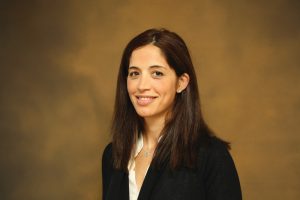
Carole Fakhry, M.D., M.P.H, is a Professor of Otolaryngology – Head and Neck Surgery. She and Amber have collaborated for over 15 years, co-leading many of the studies described here. It is great to work with people in different fields – similar interests and different expertise complement each other to make the research better.
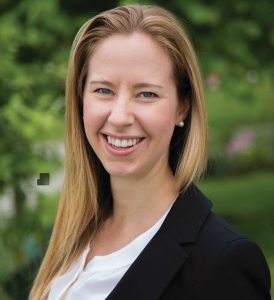
Hilary Robbins PhD, MHS, MSPH, completed her PhD working with Amber. Now, she is a scientist at the International Agency for Research on Cancer in France. Her research uses blood tests and statistical models to predict who is likely to get cancer and who might benefit from tests to detect cancer early. The best part of her job is working on an international team which includes 10 people from 10 different countries!

Sally Peprah PhD, B Pharm, MSPH, moved to the US about a decade ago and she completed her PhD working with Amber. Currently, she is an epidemiologist at the United States Food and Drug Administration. Her work involves evaluating the safety of approved drugs to identify adverse outcomes including cancers that did not emerge during the drug development process. Her tip is to “Remember why you started and always keep your goals in sight”.
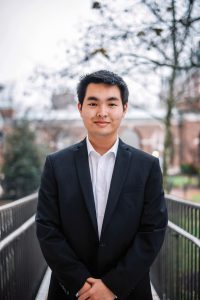
Michael Shen, B.S. is a Research Program Coordinator working with Amber at the Johns Hopkins Bloomberg School of Public Health. He enrols people in research studies and collects their data and samples. Since Michael would like to be a doctor one day, he appreciates working in the hospital and the mentorship he receives from his colleagues. The best part of the job is the chance to provide HPV education in his community.

Yuehan Zhang, ScM, is currently working on her PhD in Epidemiology at Johns Hopkins Bloomberg School of Public Health with Amber. For her PhD thesis, she is studying the effects of microbiome and cytokines on oral HPV persistence, as well as studying the impact HPV vaccination will have preventing cancer. Yuehan is passionate about using epidemiologic methods to design research studies. Her tip is to “Think big, act small, keep learning, pursue your passion.”
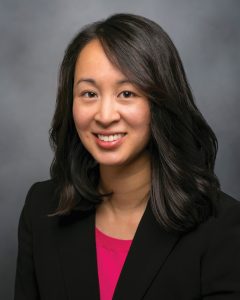
Jennifer Lam PhD, MPH, completed her PhD working with Amber. She is a Staff Scientist at the Kaiser Permanente Northern California Division of Research. Her research focuses on preventing cancer and other aging-related conditions in people with HIV infection. She helps to design, develop and direct research studies, as well as working to analyse and interpret study results.
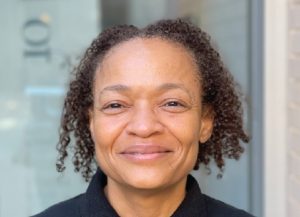
Tanya Troy, MPH, is a Research Program Manager working with Amber at Johns Hopkins University School of Medicine. She manages a cancer screening research study with multiple sites across the US. She helps to organise and implement the research protocol and works with patients, doctors and faculty, as well as lab and hospital staff. She studied social sciences in college and, in graduate school, studied epidemiology, health disparities, research design, and biostatistics. She enjoys being part of a team that works to understand risk factors for disease and ultimately improve health.
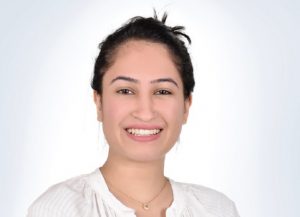
Sakshi Tewari, MHS, is a Senior Research Assistant working with Amber at Johns Hopkins Bloomberg School of Public Health. She helps to manage, clean and explore data collected from study participants to answer questions about cancer prevention. Sakshi’s past training was as an engineer in biotechnology, but her curiosity about health at the population led her to pursue a master’s in epidemiology. The best part of her job is the new things she gets to learn and collaborating with colleagues.

Daisy Le, PhD, MPH, MA, worked with Amber as a post-doc after her PhD. She is now an Assistant Professor at the George Washington University. She studies health disparities in cancer, engaging minority, low-income and vulnerable populations. Daisy is the daughter of Vietnamese refugees; she has experienced first-hand the challenges that come with navigating the health care system. She has since dedicated her career to improving health and healthcare access among underserved communities. Her tip is to “Never let the fire that lives in your soul burn out; believe in yourself and keep going!”
Do you have a question for Amber and her team?
Write it in the comments box below and Amber and her team will get back to you. (Remember, researchers are very busy people, so you may have to wait a few days.)


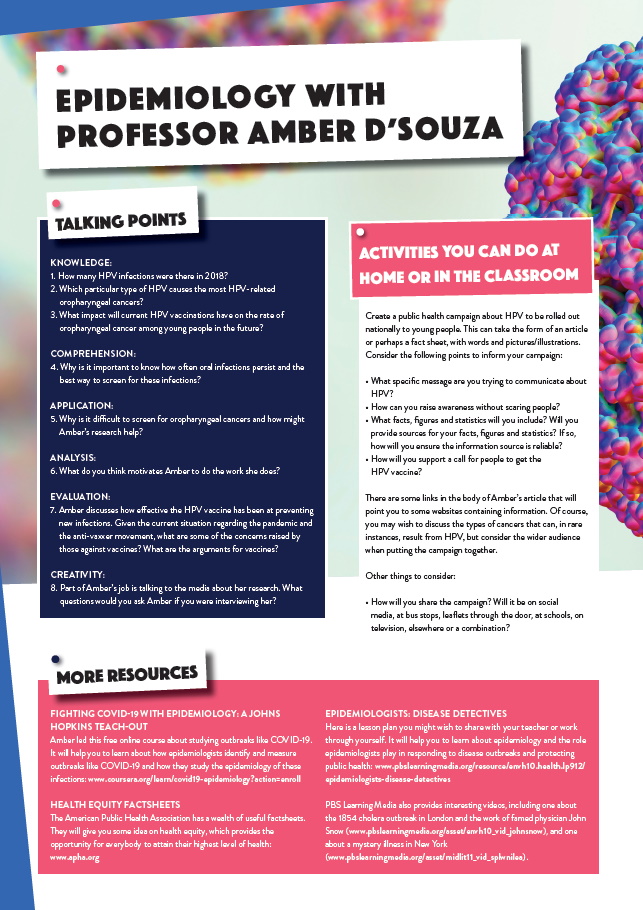

Hi! I just read this article on the HPV and oral cancer research you all have done. I am curious if you have found any links or correlations between HPV and seizures in adults (not related to the vaccine or pregnancy). My mother just finished chemo and radiation for tonsil cancer and then began experiencing seizures. We are unable to pinpoint the exact cause of her seizures and I would interested in reading about any research you all have done in this area. Thank you for your time and more importantly, thank you for your research!
Hi Kimber. I haven’t research this area. It is something you should discuss with your moms treatment team. Seizure is listed by the American Cancer Sicety as a possible short term side effect for radiation to the brain. https://www.cancer.org/treatment/treatments-and-side-effects/treatment-types/radiation/effects-on-different-parts-of-body.html